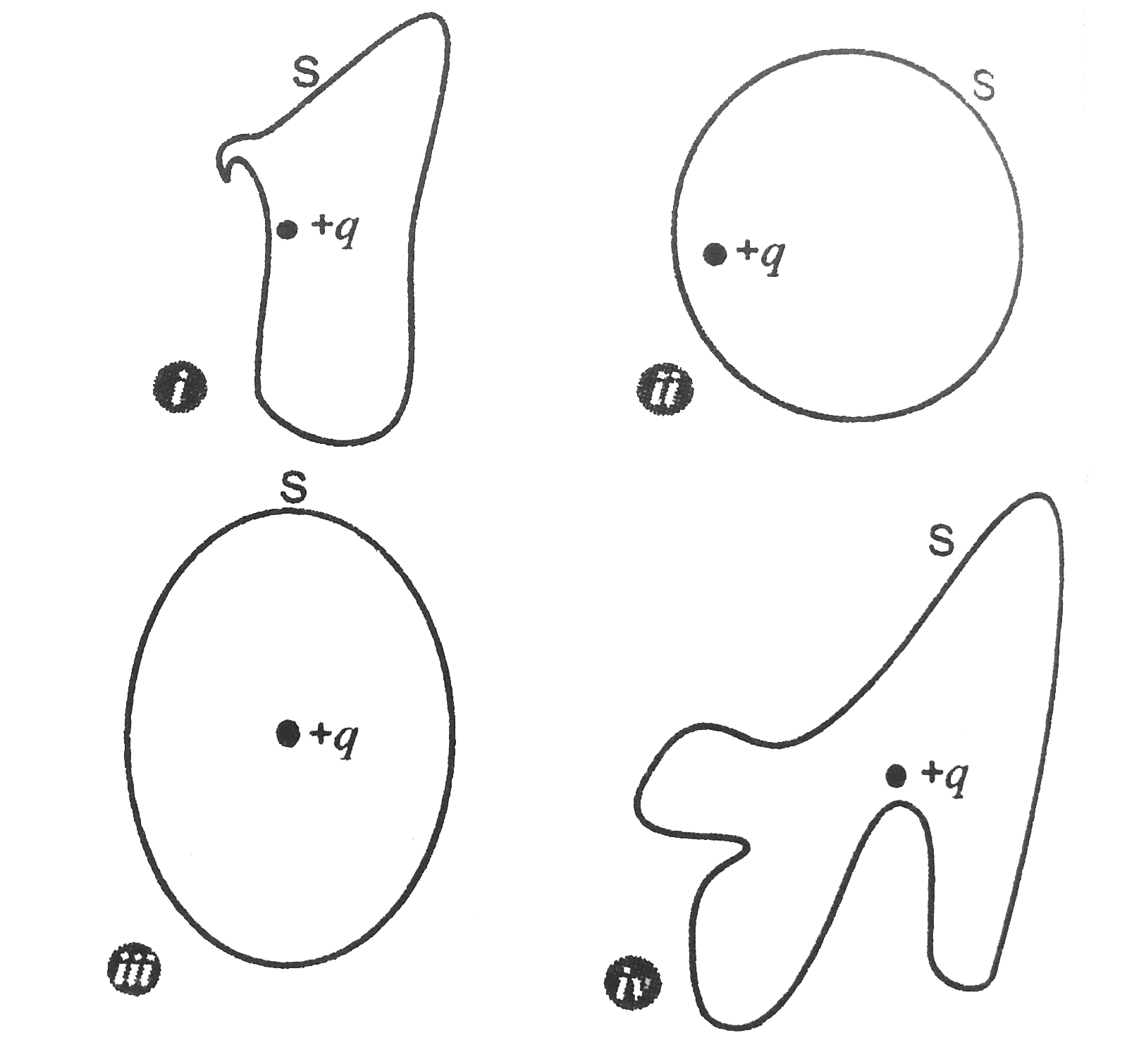Gauss theorem:
Gauss theorem is mainly used to find out the electric flux linked to a closed surface. It does not depend upon the shape or size of surface. According to this theorem, the electric flux linked to a closed surface is equal to (1ε0) times the charge enclosed by the surface.
Let we have a charge q, now if we want to find out the net flux linked to a closed surface around it them,
Electric flux ϕ=∮s→E.→ds=qε0
Gauss theorem is used to find out:
Electric force
Electric flux
Electric potential
None of these.
The correct Answer is:B
To solve the question regarding Gauss's theorem, we will follow these steps:
Step 1: Understand Gauss's Theorem
Gauss's theorem states that the total electric flux (Φ) through a closed surface is proportional to the charge (q) enclosed within that surface. Mathematically, it can be expressed as:
Φ=∮S→E⋅d→s=qϵ0
Where:
- Φ is the electric flux through the closed surface.
- →E is the electric field vector.
- d→s is the differential area vector on the closed surface.
- q is the total charge enclosed within the surface.
- ϵ0 is the permittivity of free space.
Step 2: Identify the Purpose of Gauss's Theorem
From the passage, we can see that the main purpose of Gauss's theorem is to find the electric flux linked to a closed surface. This is independent of the shape or size of the surface.
Step 3: Apply the Theorem to a Charge
If we have a charge q placed inside a Gaussian surface, we can use Gauss's theorem to calculate the electric flux linked to that surface. The equation simplifies to:
Φ=qϵ0
Step 4: Conclusion
Thus, Gauss's theorem is primarily used to find out the electric flux linked to a closed surface surrounding a charge.
Final Answer
Gauss's theorem is used to find out the electric flux linked to a closed surface.
---
Gauss's theorem states that the total electric flux (Φ) through a closed surface is proportional to the charge (q) enclosed within that surface. Mathematically, it can be expressed as:
- Φ is the electric flux through the closed surface.
- →E is the electric field vector.
- d→s is the differential area vector on the closed surface.
- q is the total charge enclosed within the surface.
- ϵ0 is the permittivity of free space.
From the passage, we can see that the main purpose of Gauss's theorem is to find the electric flux linked to a closed surface. This is independent of the shape or size of the surface.
If we have a charge q placed inside a Gaussian surface, we can use Gauss's theorem to calculate the electric flux linked to that surface. The equation simplifies to:
Thus, Gauss's theorem is primarily used to find out the electric flux linked to a closed surface surrounding a charge.
Gauss's theorem is used to find out the electric flux linked to a closed surface.
Similar Questions
If the flux of the electric field through a closed surface is zero,
View SolutionIf the number of electric lines of force emerging out of a closed surfsace is 1000, then the charge enclosed by the surface is
View SolutionThe net flux passing through a closed surface enclosing unit charge is
View SolutionThe electric flux through the surface

View SolutionThe electric flux through the surface

View SolutionThe electric flux through the surface

View SolutionThe application of Gauss's theorem gives rise to an easy evolution of electric field in the case of
View SolutionA charge Q is placed at the corner of a cube of edge length L. The electric flux linked to one of the faces not touching the charge Q is
View Solution(A): A point charge is lying at the centre of a cube of each side. The electric flux emanating from each surface of the cube is 1th6 total flux.
(R ): According to Gauss theorem, total electric flux through a closed surface enclosing a charge is equal to 1/ε0 times the magnitude of the charge enclosed.
View SolutionAssertion : If a dipole is enclosed by a surface, then according to Gauss's law, electric flux linked with it will be zero.
Reason : The charge enclosed by a surface is zero.
View Solution
